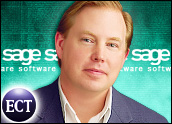
As a rule, manufacturers have been blissfully unconcerned with some of the finer points of CRM functionality and process. This is not to say they are indifferent to their customers’ needs. Rather, the low adoption rates of CRM technology in this sector have been more reflective of manufacturers’ business operations, which traditionally have not required much input from customers beyond their initial specifications. Indeed, until recently, most manufacturing operations could not respond to last minute changes in customer demands or requirements.
This is beginning to change, however. Now that manufacturers have recalibrated their operations to meet the just-in-time demands of their customers, they are turning their attention to applications that can most accurately help them predict these demands — and even those of their customers’ customers — before they occur.
Increasingly, as the following examples will show, manufacturers are turning to CRM specifically to gather as much data about their customers as possible.
My Customer’s Customer
Altman Lighting, a manufacturer of architectural and theater lighting systems, sells its products through its dealer network. Its legacy system, though dated, was sufficient to allow the company to get a handle on where its customers were and their likely future demand needs. What the system couldn’t do, Roger Pujol, assistant general manager explains to CRM Buyer, was extend this functionality to its customers’ customers.
Altman Lighting decided a few years ago that it needed this data as it sought to streamline operations and introduce new products. It wanted to be able to connect with the end user directly, to manage spare parts, and get a handle on other potential stresses to its manufacturing operations.
“The legacy system we had in place didn’t afford us the opportunity to go beyond that level,” he says.
At the same time, the firm had increased the number of channels through which its dealer network could communicate with the company to include e-mail and interactive chat. At that point, it realized the time had come to combine all of this data, including new data from the online channels, into one database, Pujol says.
“We wanted to be able to tie all of this information together, and to be able to expand the boundaries ofthe system, instead of just looking at one level — the dealers,” Pujol explains.
The legacy system the company had in place was an MRP application. In general, Pujol says, those are not oriented to customer interactions. “They are good at shipping and manufacturing processes that touch upon the customer, of course, but [they are] inferior as far as some of the more advanced CRM functionality [goes].”
Eventually Altman honed in on Exact Software’s Web-based e-Synergy application. One selling point, Pujol says, was that it would easily integrate into the company’s ERP application, Macola Progression.
Indeed, integration and implementation of the CRM system happened very quickly, with few hitches. The firm’s new CRM system has provided a number of benefits to Altman, beyond the firm’s original business driver. It has addressed, for example, a nagging problem at the company: scattered sales leads and data, which would become very problematic when sales staff left the company.
Altman also uses e-Synergy reporting capabilities to identify and proactively address customer issues or potential problems. Recently, for instance, it discovered that the majority of calls that came in during the morning hours were from customers looking for tracking numbers. In response, they automated the process of sending out those numbers.
Spare Parts, After-Sales Service
Stolle Machinery also wanted to be able to gather, process and analyze more granular data, not only about its customer base, but the equipment it had out in the field, as well. This was no easy task, as the company — which designs, manufactures and distributes equipment for the metal container industry — delivers product to such packaging giants as Rexam and Ball, and food-and-beverage companies Coca-Cola and Oscar Mayer.
To further complicate matters, the firm had made a few acquisitions in recent years. Stolle began to implement new applications in finance, human resources, distribution and manufacturing, all from vendor IFS, to get a better handle on its outdated, and, in some cases, poorly integrated IT systems.
Then, to better incorporate data from customers and suppliers into its back-end applications, the company decided to implement IFS’ CRM module, says project managerMichael Kalkman. Implementation will begin in the first quarter.
The company did not put much weight on ROI studies or other projections to see if the application would pay for itself. “We saw it more as a cost of doing business,” Kalkman tells CRM Buyer. “If we didn’t implement it, we wouldn’t be able to stay competitive.”
Specifically, Stolle Machinery had been looking to establish better visibility into what its customers bought, when these purchases were made, and other data points down to the level of the serial numbers of the equipment. This was partly to position the company to be more proactive in its cross sell and upsell activities, Kalkman says, and partly to help it better manage its spare parts, warranty and after-sales service operations.
“This data should be an asset, but right now [it’s] exposed as a liability,” Kalkman says. “It’s not accessible to anyone in the company. I have marketing and sales people that could benefit from data that only the president and a few executives have on their spreadsheets.”
CRM in Manufacturing, Part 2: An SAP Enterprise Implementation

























































Social CRM
See all Social CRM